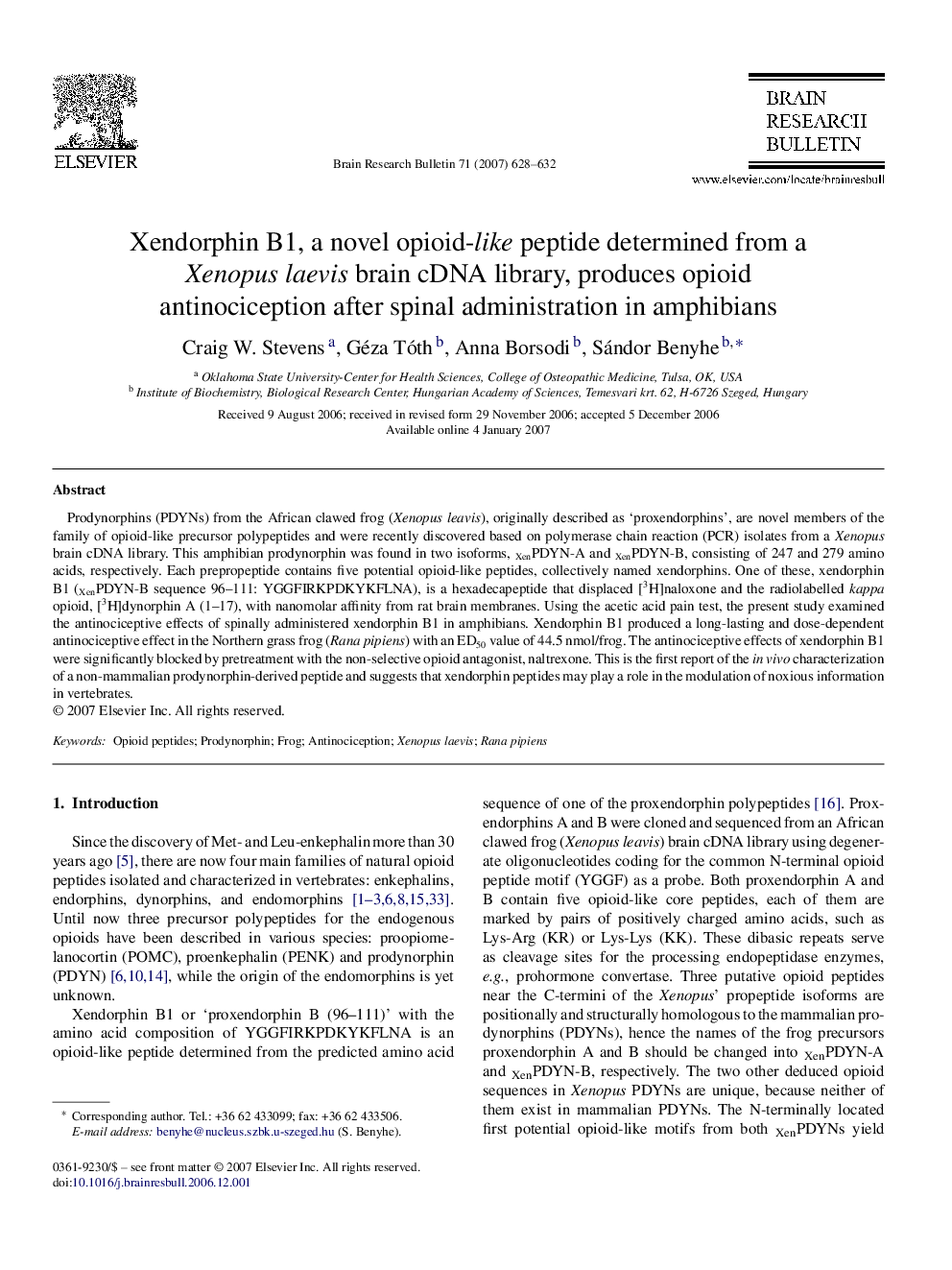| کد مقاله | کد نشریه | سال انتشار | مقاله انگلیسی | نسخه تمام متن |
|---|---|---|---|---|
| 4320035 | 1290844 | 2007 | 5 صفحه PDF | دانلود رایگان |

Prodynorphins (PDYNs) from the African clawed frog (Xenopus leavis), originally described as ‘proxendorphins’, are novel members of the family of opioid-like precursor polypeptides and were recently discovered based on polymerase chain reaction (PCR) isolates from a Xenopus brain cDNA library. This amphibian prodynorphin was found in two isoforms, XenPDYN-A and XenPDYN-B, consisting of 247 and 279 amino acids, respectively. Each prepropeptide contains five potential opioid-like peptides, collectively named xendorphins. One of these, xendorphin B1 (XenPDYN-B sequence 96–111: YGGFIRKPDKYKFLNA), is a hexadecapeptide that displaced [3H]naloxone and the radiolabelled kappa opioid, [3H]dynorphin A (1–17), with nanomolar affinity from rat brain membranes. Using the acetic acid pain test, the present study examined the antinociceptive effects of spinally administered xendorphin B1 in amphibians. Xendorphin B1 produced a long-lasting and dose-dependent antinociceptive effect in the Northern grass frog (Rana pipiens) with an ED50 value of 44.5 nmol/frog. The antinociceptive effects of xendorphin B1 were significantly blocked by pretreatment with the non-selective opioid antagonist, naltrexone. This is the first report of the in vivo characterization of a non-mammalian prodynorphin-derived peptide and suggests that xendorphin peptides may play a role in the modulation of noxious information in vertebrates.
Journal: Brain Research Bulletin - Volume 71, Issue 6, 30 March 2007, Pages 628–632